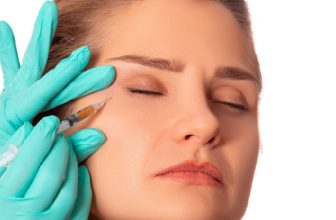How to Get Rid of Epoxy Rash
Epoxy is a popular and affordable choice for many home improvement projects. However, it can cause a rash if you are not careful. In this blog post, we will discuss how to get rid of epoxy rash and how to protect yourself from this irritation in the future. We hope that this information will help keep you safe and comfortable while working with epoxy.
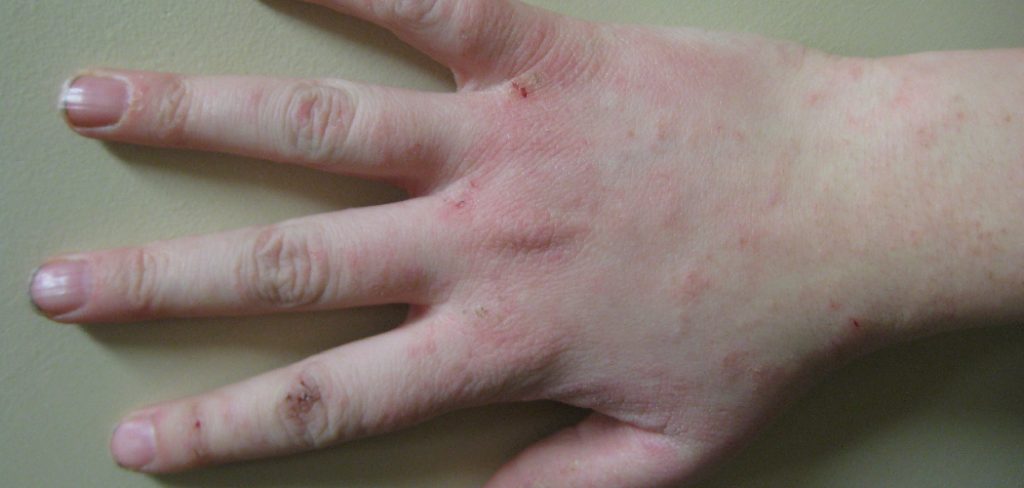
What Is the Epoxy Rash?
Epoxy rash, also known as contact dermatitis, is a skin reaction that occurs when the skin comes into contact with certain chemicals. These chemicals are found in many products, including adhesives, paints, and resins. The rash usually appears as a red, itchy, and inflamed area on the skin. In some cases, it can also cause blisters or bumps.
An epoxy rash is most commonly seen on the hands, arms, or legs. However, it can also occur in other parts of the body if the chemicals come into contact with clothing or other materials. The rash typically goes away within a few days or weeks.
However, it can occasionally lead to more serious skin reactions. Therefore, if you think you have an epoxy rash, you must see a doctor for treatment.
Why Should You Get Rid of Epoxy Rash?
An epoxy rash is no laughing matter. This serious skin condition can cause great pain and discomfort, not to mention the unsightly rash it leaves behind. So if you’re dealing with epoxy rash, there’s only one thing to do: get rid of it!
The good news is that there are several effective treatments available. With the help of a qualified dermatologist, you can find the right treatment for your specific case of epoxy rash. So don’t suffer any longer than you have to – get rid of the epoxy rash and get back to enjoying your life!
9 Tips to Follow on How to Get Rid of Epoxy Rash
If you’ve ever worked with epoxy, you know that it can be a great way to create a strong bond between two surfaces. However, you may also know that epoxy can cause an itchy, red rash in some people. This is known as “epoxy rash,” and it’s caused by contact with the chemical components in epoxy.
If you develop an epoxy rash, don’t worry – there are a few things you can do to get rid of it quickly. Here are a few tips:
1. Wash the Affected Area
The first step is to wash the affected area with soap and water. Be sure to use a mild soap as anything else could further irritate the skin. If you can, hold the area under running water for a few minutes to help remove any remaining epoxy resin.
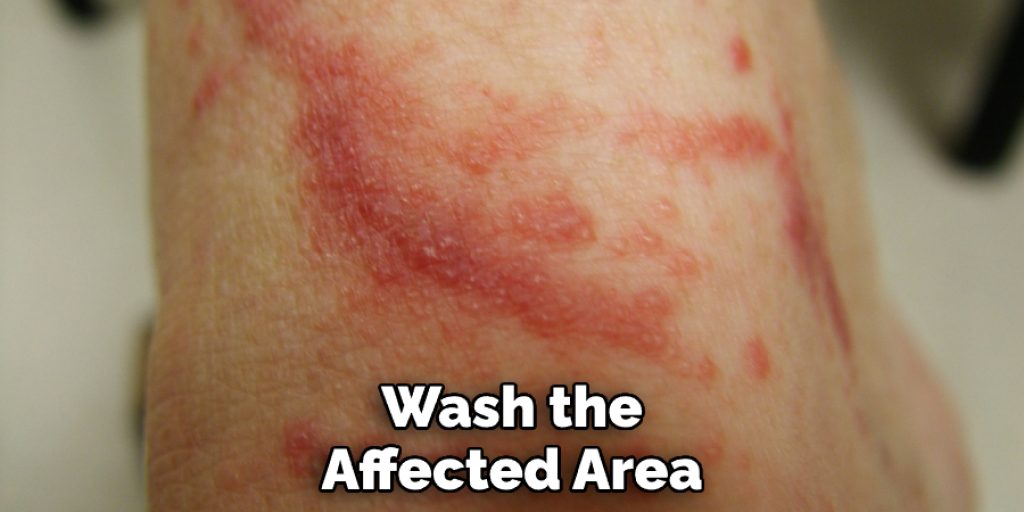
2. Apply a Cool Compress
If the affected area is swollen or painful, a cool compress can help reduce the inflammation. Simply soak a clean cloth in cold water and apply it to the affected area for a few minutes. Repeat this process as needed until the swelling goes down.
3. Moisturize
After you’ve cleaned and cooled the affected area, apply a moisturizer to help soothe the skin. Choose a fragrance-free option, as fragrances can further irritate sensitized skin.
4. Apply a Corticosteroid Cream
If the rash is causing itchiness or pain, you can try applying a corticosteroid cream. This will help to reduce inflammation and swelling. Be sure to follow the directions on the package carefully and only use the cream for a short period of time, as long-term use can cause side effects.
5. Take an Antihistamine
You may want to take an antihistamine if you’re suffering from allergic reactions like hives or swelling. This will help to relieve your symptoms and make you more comfortable. Many over-the-counter antihistamines are available, so speak to your doctor or pharmacist about which one is right for you.
6. Take an Oatmeal Bath
Oatmeal has natural anti-inflammatory and itch-relieving properties. It can help soothe the skin and reduce irritation caused by an epoxy rash. Just add 1–2 cups of oatmeal to a lukewarm bath and soak in it for 10–15 minutes. You can also use an oatmeal-based soap or shampoo to wash the affected area.
7. Apply a Topical Steroid
If the rash is still bothering you after taking these measures, you can try a topical steroid. Be sure to follow the directions on the package and only use it for a short period of time, as steroids can have side effects if used for too long. You should see an improvement in the rash within a few days of using the steroid.
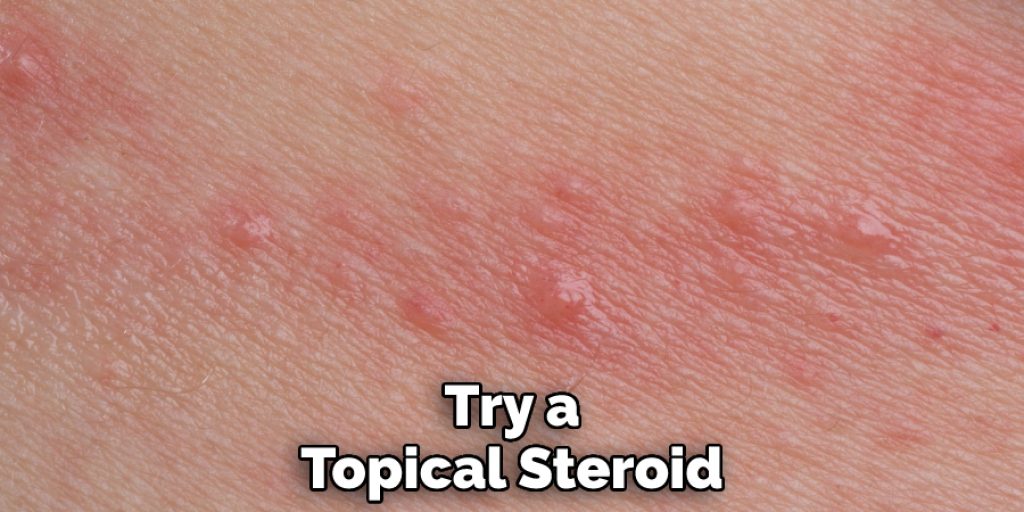
8. See a Doctor
If the rash is severe, it may be best to see a doctor. They can prescribe medication to help clear up the rash and relieve the itchiness and pain. In some cases, they may also recommend a course of oral steroids. If you have an allergy to epoxy, you must avoid all products containing it.
9. Avoid Future Exposure
Once you’ve treated the rash and symptoms have subsided, take steps to avoid future exposure to epoxy. If you work with epoxy, wear gloves and protective clothing. When using epoxy products, follow the manufacturer’s instructions carefully.
Avoid contact with skin and eyes, and ventilate the area well. If you are sensitive to epoxy, talk to your doctor about avoiding exposure and what to do if you react.
That’s it! You’ve now learned how to get rid of epoxy rash. With these tips, you can quickly and easily treat the rash and get back to your normal life.
You May Also Read: How to Dispose of Liquid Paraffin
The Top 5 Best Remedies for Epoxy Rash
1. Soap and Water
The simplest way to remove epoxy resin from your skin is to use soap and water. Just make sure to use a mild soap so as not to irritate your skin further.
2. Alcohol
If soap and water aren’t enough, you can try using rubbing alcohol or another type of spirit to remove the resin. Be sure to test this on a small patch of skin first, as some people may be allergic to the alcohol.
3. Vinegar
Vinegar is another popular home remedy for removing epoxy resin from the skin. Simply soak a cotton ball in vinegar and apply it to the affected area.
4. Lemon Juice
Like vinegar, lemon juice can also help to break down epoxy resin. Just apply a few drops of lemon juice to the affected area with a cotton swab.

5. Baking Soda
Baking soda can be used as a gentle exfoliant to remove dead skin cells and improve the appearance of your skin. Simply mix baking soda with water to form a paste and apply it to the affected area in a circular motion.
How to Avoid Epoxy Rash
Epoxy resin is a strong, durable material that is often used in construction and manufacturing. However, it can also be a source of irritation for some people. An epoxy rash is a condition that can occur when the skin comes into contact with epoxy resin. Symptoms include redness, itchiness, and blistering.
In some cases, the rash may also lead to allergic reactions. There are several ways to avoid the epoxy rash. First, it is important to wear gloves when working with epoxy resin. If you do get the resin on your skin, wash it off immediately with soap and water. You should also avoid touching your face while working with epoxy resin.
Finally, if you have a reaction to the resin, seek medical attention immediately. By taking these precautions, you can help to avoid the epoxy rash. Keep reading for more information about how to get rid of epoxy rash.
How to Identify if You Have Epoxy Rash
Ever had an itchy, burning sensation on your skin that won’t go away no matter how much you scratch it? If you’ve come into contact with epoxy, the culprit could be epoxy rash. An epoxy rash is a type of allergic contact dermatitis that occurs when the skin comes into contact with epoxy resin.
The symptoms of epoxy rash include itching, redness, and blistering. If you think you might have an epoxy rash, it’s important to see a doctor as soon as possible. Left untreated, the epoxy rash can lead to serious skin infections. To avoid coming into contact with epoxy in the first place, always wear gloves and protective clothing when working with it.
If you do come into contact with epoxy, be sure to wash the affected area immediately with soap and water.
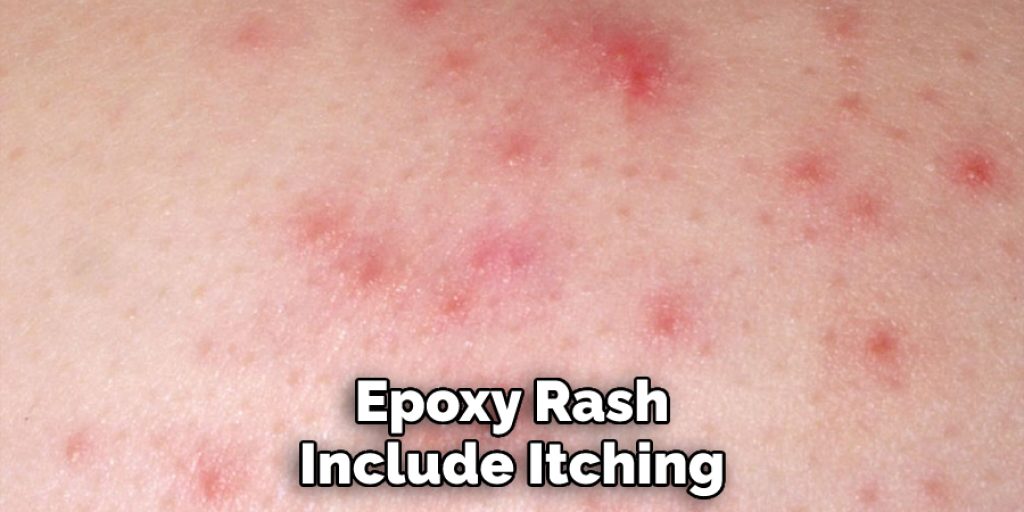
Preventing Epoxy Rash from Happening in The Future
In the summer of 2020, many people were working with epoxy for the first time. With more time, many people took up new hobbies like woodworking and painting. Epoxy is a popular material for these activities because it is strong and dries quickly. However, epoxy can also cause skin irritation, known as “epoxy rash.”
Symptoms include redness, itching, and swelling. In severe cases, blisters may form. If you develop an epoxy rash, it is important to seek medical attention and avoid using epoxy in the future. In addition, you can do a few things to prevent the epoxy rash from happening in the first place.
First, make sure you are using gloves when working with epoxy. Second, always perform a patch test before using a new product. Finally, if you do develop skin irritation, wash the area with soap and water immediately. By taking these precautions, you can help ensure that epoxy rash does not ruin your summer fun.
Conclusion
If you are unfortunate enough to suffer from epoxy rash, there are a few things that you can do to help relieve the symptoms and speed up the healing process. We hope that this article has been helpful and that you are now better equipped to deal with this pesky condition. Thanks for reading our post about how to get rid of epoxy rash.


